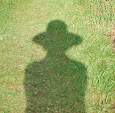[1] Japanese Ghost Stories by Lafcadio Hearn, ed. Paul Murray, Penguin.
[2] Japanese Tales of Lafcadio Hearn edited by Andrei Codrescu, Princeton University Press.
This book is "A collection of twenty-eight ... stories, inspired by Japanese folk tales and written by renowned Western expatriate Lafcadio Hearn (1850-1904). [He] was one of the nineteenth century's best-known writers, his name celebrated alongside those of Mark Twain and Robert Louis Stevenson. Born in Greece and raised in Ireland, Hearn was a true prodigy and world traveler. He worked as a reporter in Cincinnati, New Orleans, and the West Indies before heading to Japan in 1890 on a commission from Harper's. There, he married a Japanese woman from a samurai family, changed his name to Koizumi Yakumo, and became a Japanese subject. An avid collector of traditional Japanese tales, legends, and myths, Hearn taught literature and wrote his own tales for both Japanese and Western audiences.
* * * * * * *
This is the article written by Damian Flanagan on the TLS website:
https://www.the-tls.co.uk/articles/nightmare-touches-japan/
He talks about these 2 books and starts out stating:
"In the penultimate James Bond novel, You Only Live Twice (1964), just before 007 slays his nemesis Blofeld in a “Castle of Death” in Japan, the criminal mastermind explains to Bond the term “kirisute gomen”: the samurai right to peremptorily lop off the heads of lower orders for perceived insults. Bond hisses, “Spare me the Lafcadio Hearn, Blofeld”. It was no throwaway line by Ian Fleming, who spends the entire novel channelling his own inner Lafcadio Hearn by explaining, at great length, the nuances of Japanese culture to Western readers."
The rest is the story of this author's life and is fascinating! Hearn is a writer who drew on his background experiences in much the same way as, say, Patrick MacGill (He wrote Children of the Dead End which is an autobiographical novel which roams from the tenant farms of Ireland to Scotland where he got work as a navvy [labourer] when they were building the Kinlochleven dam.)
"Hearn wandered London aimlessly and was soon persuaded to emigrate to America and seek the assistance of a family relative in Cincinnati, who gave him only the most modest help. Hearn’s tramp-like existence of casual work and rough sleeping continued until he landed a job at a local newspaper and began to attract attention as a talented reporter of lurid murder cases. Venturing into the African American sections of town, he demonstrated a keen interest in a vibrant black culture little written about in the white press."






No comments:
Post a Comment